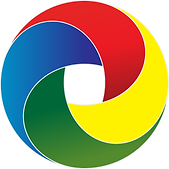top of page
Nae-Tajah Maxey
Graphics
Raster Graphic- In computer graphics, a raster graphics image is a dot matrix data structure representing a generally rectangular grid of pixels, or points of color, viewable via a monitor, paper, or other display medium. Raster images are stored in image files with varying formats.
Vector Graphic-Vector graphics is the use of polygons to represent imagesin computer graphics. Vector graphics are based onvectors, which lead through locations called control points or nodes.
graphics file formats
BMP- BMP stands for Bitmap file.Bitmap files support all versions of Windows.Most suitable for icons and small images.Medium quality images are produced.Disadvantages:It has the largest file size compared to other formats.We tend to lose the quality of the picture obtained.
GIF-It is abbreviated as Graphics Interchange Format.Advantages:It is best used for web pages with fast uploading speed only.It is the smallest compared to other formats listed here.It is best suited in making text, screenshots, cartoons and animations which save the file in GIF format.Also it can be used in making logo of your webpage.Disadvantage:It has limited color codes up to 256 or less.
JPEG-JPEG stands for Joint Photographic Experts Group.It produces high quality, high resolution and it is second largest image format compared to other formats listed here.It is the most common image type used for photos.Some of the cameras download photos in JPEG format.We tend to get a quality image as it is with no loss in quality. Disadvantages:Not good for images with sharp edges as they get blurred.
PICT-Main advantages: for Macintosch platforms and as an intermediary between Macintosh applications. Effective compression of solid colour blocks.Main disadvantage: limited to Macintosh computers and applicationsMain use: in Macintosh applications.
PMG-It stands for Portable Network Graphics.Advantages:It can also be used for website logo and screenshots.Can be used in any operating systems such as Windows Vista, MAC.High quality resolution images can be produced.It is most useful for sharp transition images and texts and for images which require frequent editing.It is loss less in nature. (i.e. no loss of quality in picture.)Disadvantages:It is the third largest formats of the other formats listed here.
TIFF-Pros of TIFF:Very flexible format, it supports several types of compression like JPEG, LZW, ZIP or no compression at all.High quality image format, all color and data information are storedTIFF format can now be saved with layersCons of TIFF:Very large file size–long transfer time, huge disk space consumption, and slow loading time.


bottom of page